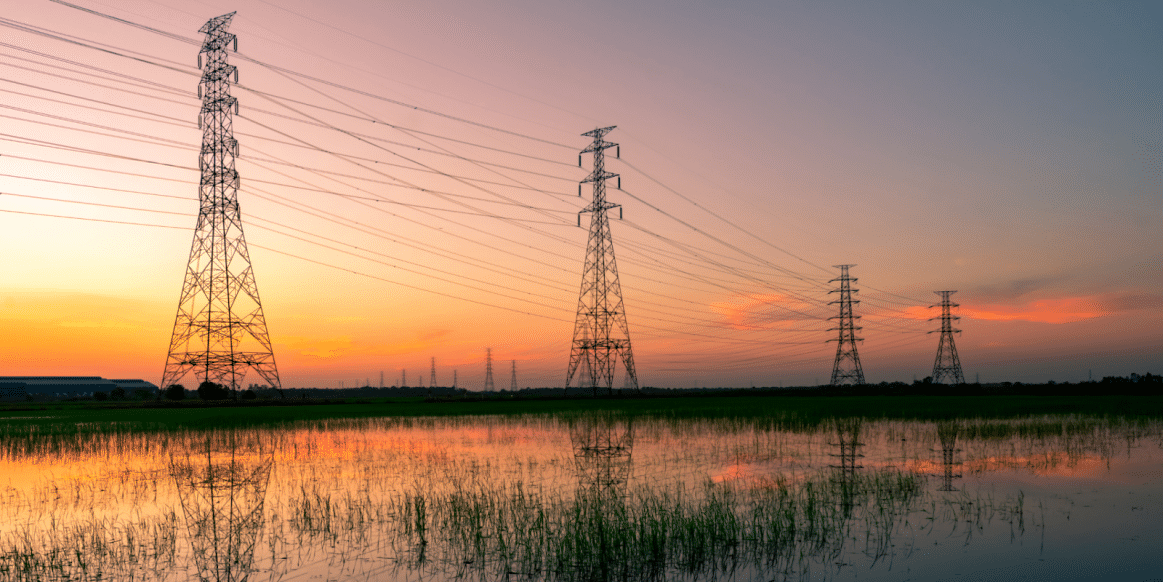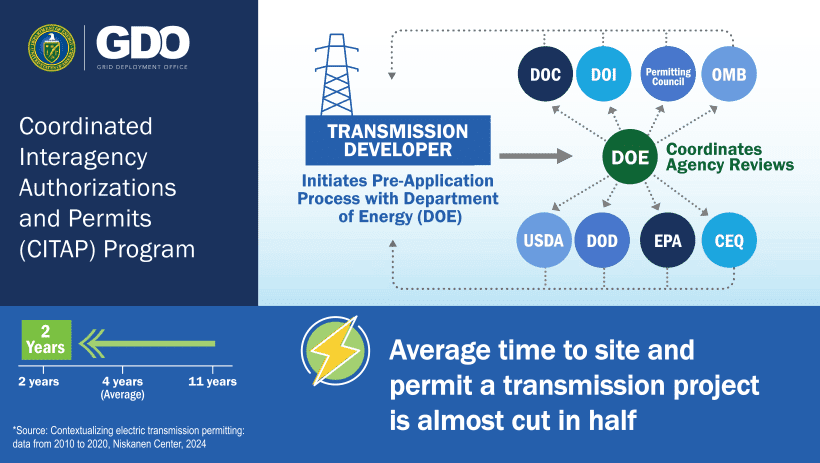
On April 25, 2024, the White House announced a new final rule that promised to “slash transmission review timelines in half while maintaining the integrity of the environmental review process.” For solar industry professionals, it may come as no surprise that the demand for grid capacity is rising. Between the manufacturing and deployment of renewable energy and EV infrastructure, and rising energy consumption across the economy, pressure on the electrical grid is expected to continue at impressive levels of growth. Studies have shown that the US requires 3-4 times the current transmission capacity to adapt to the White House’s stated clean energy goals, as outlined in the Inflation Reduction Act, Bipartisan Infrastructure Law, and other critical energy policies.
The current permitting system contains impediments that have historically extended the permitting process for transmission projects over multiple years. According to the Council of Environmental Quality, the average time required for federal agencies to complete Environmental Impact Statements between 2010 and 2018 was 4.5 years. For major power line and transmission infrastructure projects, that timeline has often stretched over 10-15 years from inception to construction as a result of planning, permitting, and finance slow-downs. Economics will traditionally favor incremental, slow expansion rather than major infrastructure overhauls with higher up-front costs.
Experts have called streamlining transmission approvals “an urgent, near-term priority for the U.S. solar and storage industry”. This leads to the question, how has the federal government promised to prioritize the redevelopment of old transmission infrastructure to boost resilience to severe weather conditions, security hazards, and other threats? Firstly, the White House rule has relied on the Federal Energy Regulation Commission’s existing transmission planning principles, including coordination, openness, transparency, information exchange, comparability, and dispute resolution. To achieve a multifaceted approach to boost access to reliable, affordable power, the federal government created a specific program dedicated to this issue called the Coordinated Interagency Transmission Authorizations and Permits (CITAP) Program.
Policymakers relied on research, such as the Niskanen Center and the Princeton ZERO Lab’s Repeat Project, in establishing the program. Takeaways from these critical studies revealed multiple layering issues delaying the transmission permitting process. Most notably, at least nine federal agencies are active in approving transmission and power line projects. Nuanced challenges are added as many transmission projects cross state lands and borders between public and private lands; this ties in the need for coordination among even more agencies and stakeholders. The CITAP program aims to address these critical coordination issues by officially placing responsibility upon the Department of Energy for coordinating environmental review and permitting for transmission projects. The program also establishes a two-year requirement for federal agencies to complete the process without compromising the quality of environmental impact assessments.
In addition to the CITAP program, the DOE reported an official goal to upgrade 100,000 miles of power lines in the next five years thanks to support from the Grid Resilience and Innovation Partnerships (GRIP) program. These upgrades primarily consist of installing high-performance conductors and dynamic line ratings to enable existing lines to carry more power. Advanced power lines, often wrapped in aluminum to boost current capacity, commit a rapid payback and high efficiency. These DOE activities align with many research-backed recommendations for increasing grid reliability and growing capacity to accommodate the gigawatts of projected utility-scale solar and wind installations. The Niskanen Center suggested that along with improved federal agency coordination, cooperation, and capacity, the agencies must increase transparency in project review and timelines by investing in interagency staffing. It was also recommended that federal agencies harmonize interaction among sovereign authorities by enriching state and tribal staffing and knowledge sharing. The Repeat Project published a study claiming that America’s failure to accelerate transmission development beyond the historical 1%-per-year rate would constrain the IRA’s carbon reduction goals; the nation must reach at least a 2.3%-per-year rate of development to fulfill the policy’s emissions potential by 2035.
The April 25th rule acknowledges that power line infrastructure expansion is required to adapt to the inflow of renewable energy. By speeding up the permitting process for transmission, this rule will enable large-scale clean energy projects to the grid quickly. Further, projects with proven long-term environmental benefits are eligible to receive expedited review or in some cases, to bypass the reviews entirely.
Experts expect to see swift movement as a result of the rule, particularly in the Western US where transmission projects have been at a standstill for decades. Proposed projects that plan to transmit clean energy access span from Las Vegas to Idaho, New Mexico to California, and more. As the DOE promises a two-year deadline on federal permitting for projects on public land, the solar and storage industries can expect expedited environmental review processes which will significantly reduce time from inception to operation. To stay up-to-date with the latest solar and energy policy updates, join the Greentech Renewables email list or contact your nearby location to learn how we can support your solar business.